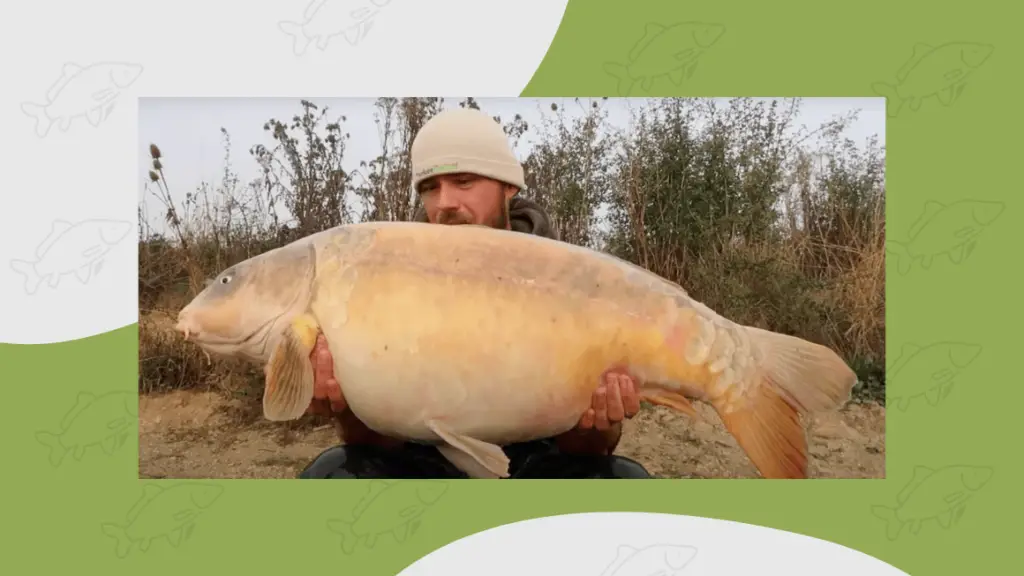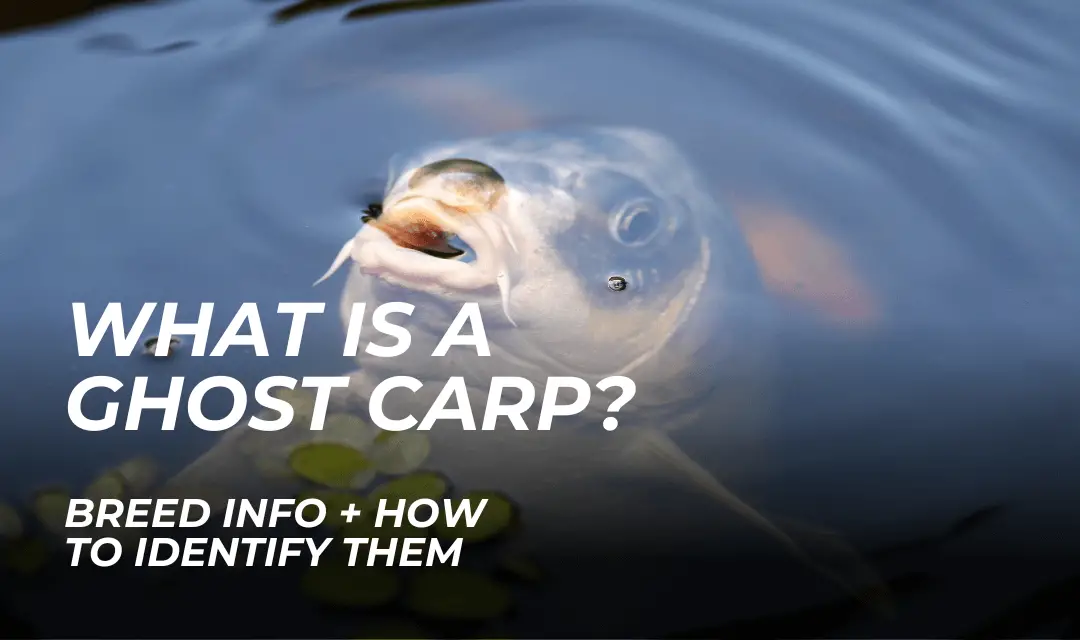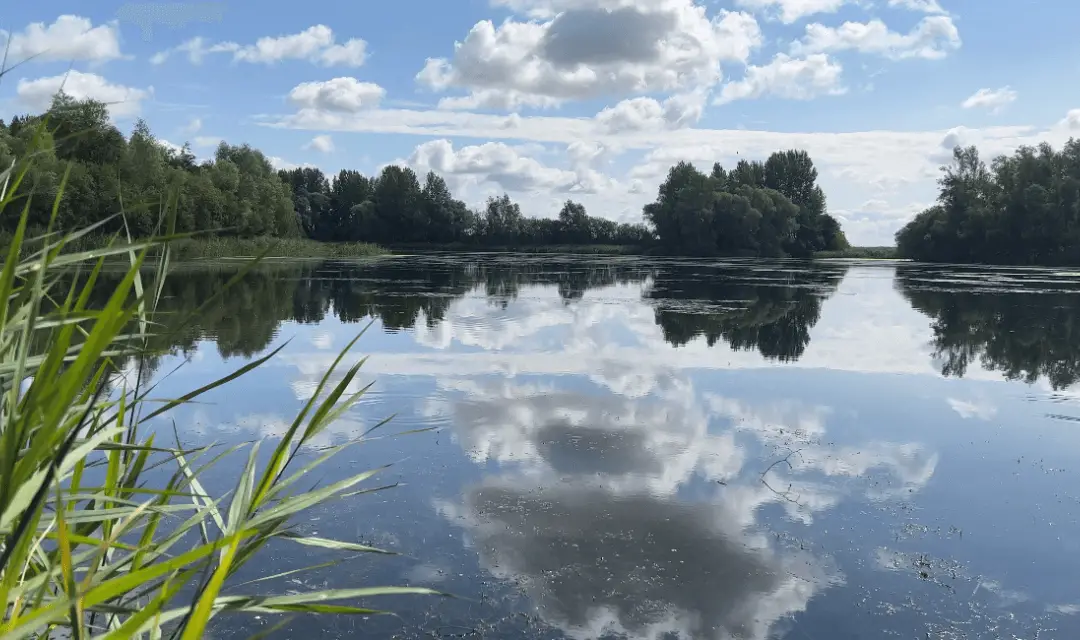Carp fishing has grown rapidly in popularity over the past twenty years, with a key part of that being due to the variety and type of carp that you can catch. There are around 7 types of carp in the UK, but were here to a talk about just one today; the ghost carp. If you’re a relatively new angler or just someone interested in fish, you might be found asking yourself, what is a ghost carp?
In this article we’ll tell you exactly what a ghost carp is, go into detail more about the breed and tell you how you can identify one if you’re lucky to have one in your landing net.
What is a Ghost Carp?
The ghost carp is a hybrid fish species that was discovered in Japan in 1980. They are scientifically known as Cyprinus carpio and are a subspecies of common carp, like all variations that we have in the UK and Europe.
Ghosties, as they are otherwise known, are a result of crossbreeding naturally coloured common carp with Koi carp. That’s why you’ll often hear them called ‘Ghost Koi’ too.

They are highly sought after due to their unique colouration, although mainly for garden ponds. Every now and then you will come across a venue with a few ghosties present, and more often than not they become a target fish for many.
They are easy to spot too, often giving away the whereabouts of large shoals of fish due to their colouration. Ghost carp have a partial loss of pigmentation, which gives them a pale, ghostly appearance. Their scales are usually translucent with hues of white, cream, or silver.
Personally, I’m a big fan of ghost carp, although they are far away from the old english strain that many old school anglers admire.
What does a ghost carp look like?
The most noticeable physical characteristic of ghost carp is their colouration. You can spot them a mile off! Unlike other carp, ghost carp have a distinctly white, grey, or yellow colour, making them extremely easy to identify. Some ghost carp may have orange or cream-coloured patches on their body, but these are less common.
Ghost carp have a heavy and large body with a deep shape. They are fully scaled, while other variants can have fewer scales like leather and mirror carp. However, just like all carp species, ghost carp don’t have scales on the head. They have long dorsal fins, and their colour can differ.
where do ghost carp live and how did they get there?
Ghost carp are freshwater fish that are native to parts of Asia and eastern Europe.
Although the majority of ghost carp are bred in captivity for ornamental purposes, they can also be found in public waterways. They have become widespread over the years and they are now often found in still waters such as ponds, canals and lakes.
Many ghost carp that you see in public waterways are often ex-pond fish. When they grow too big, owners often release them in canals and park lakes instead of rehoming or upgrading to a larger pond.
With the popularity of commercial fisheries on the rise, we are also seeing more ghost carp being introduced by fish stock companies. Their popularity isn’t quite as high as other strains but some venues do like to stock a couple of ghosties as prized fish.
Like all strains descending from the common carp, ghost carp prefer freshwater environments that are well-oxygenated and have good water quality. They are hardy fish that can tolerate a wide range of water temperatures, but they do best in water that is between 18-25°C.
WHat do ghost carp eat?
Ghost carp are omnivorous and require a balanced diet to stay healthy. They will eat a variety of things, including plants, insects, and other small fish. Like other strains of carp, they are inquisitive bottom feeders that will often eat what they can get hold of. In a natural lake environment, ghost carp can be found eating:
- Bloodworm
- Daphnia
- Mayfly Larvae
- Swan Mussels
- Water Snails
- Crayfish
The abundance of these items is all down to water quality. That’s why the biggest carp often grow in rich, clear gravel pits as opposed to silty meres and estate lakes.
Breeding and Lifespan of ghost carp
Ghost carp can breed with other carp species, but their spawn will not always be ghost carp. The spawning process for ghost carp is similar to that of other carp species.
The lifespan of ghost carp can vary depending on their breeding stock and living conditions. On average, they can live between 9 to 45+ years. Obviously this is dependent on many factors, fishing pressure being one of them. You’re much likely to find older ghost carp in venues rarely fished.
The Best Way to Catch Ghost Carp
I’ve already touched on the fact that some ghost carp are highly sought after by anglers.
If a ghost carp in your local venue is on your hit list, then you’re in luck.
The highly visible markings of a ghost carp will help you with your first challenge; actually finding the fish.
The beauty of fishing for a ghost carp is that they are so easy to identify, and therefore single out from other fish in a group.
Stalking
Stalking is probably your best option, setting traps in the margins and actually watching the fish take the bait. Obviously, this depends on the venue but if you are aware of the ghost carps regular patrol routes, you will be able to intercept quite easily.
By baiting little and often in marginal spots, you will be able to watch your target carp feed and begin to understand it’s daily patterns.
Surface Fishing
Another option would be to engage in some surface fishing.
This is highly weather dependant but if you are able to get fish including your target ghostie feeding on the surface, you can easily present a bait directly in front of it’s eyes.

Do Ghost carp post danger to other fish?
In some cases ghost carp can pose danger to other fish. This is not typically due to eating other species, although like all carp they will eat smaller fry at certain times of the year.
The danger that ghost carp pose is actually when they are transferred from one water to another without the proper tests. Unfortunately, koi carp and ghost carp can often have Koi herpesvirus (KHV), which when transmitted to another venue can wipe out the existing stock.
Unfortunately this is quite common too, as koi/ghost carp pond owners regularly release their fish into public waterways when they outgrow their garden ponds.
About the writer

Rob W
I’m Rob, Carp Squad’s main contributor. I’ve been carp fishing on and off for 15 years, but the bug is well and truly back at the moment. Hopefully the articles I write on here help you put more carp on the bank.


![Stocks Lake Norton Disney [Tips & Tactics]](https://carpsquad.com/wp-content/uploads/2023/11/stocks-lake-norton-disney-2-1.png)
